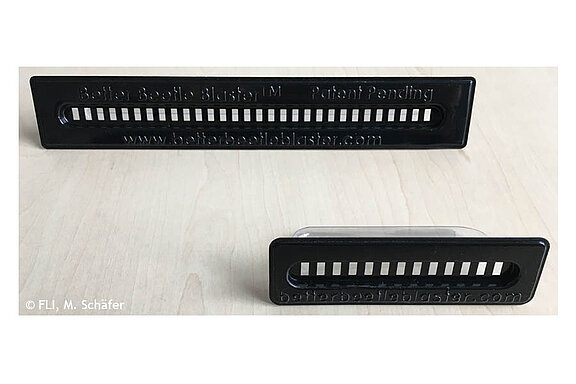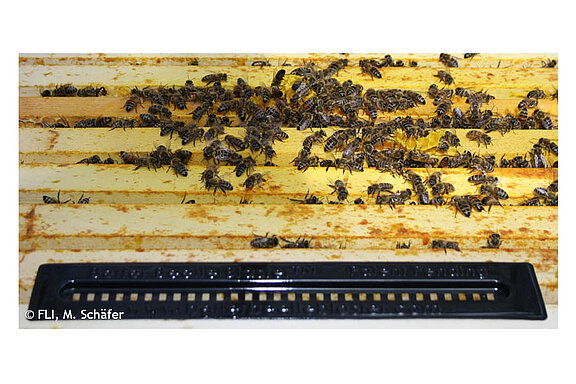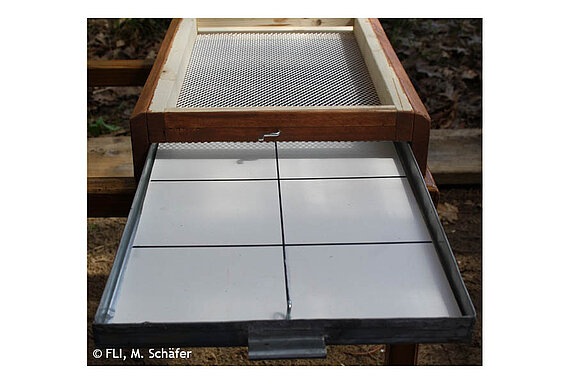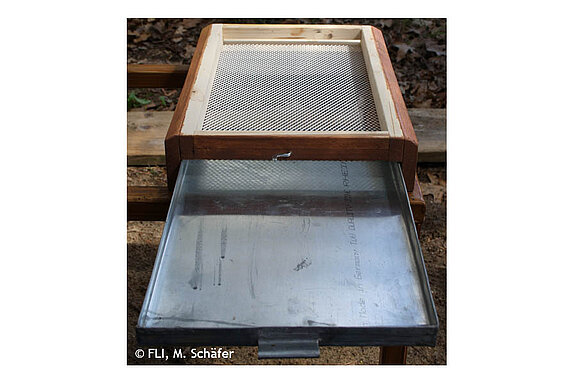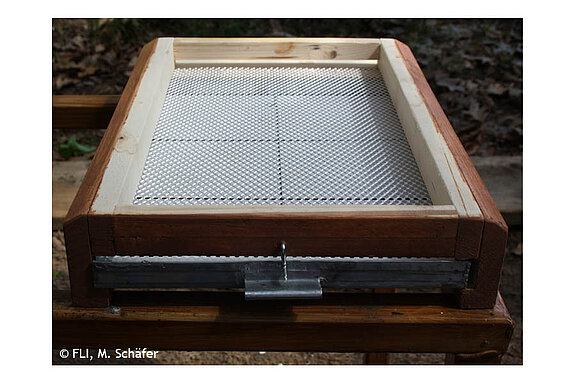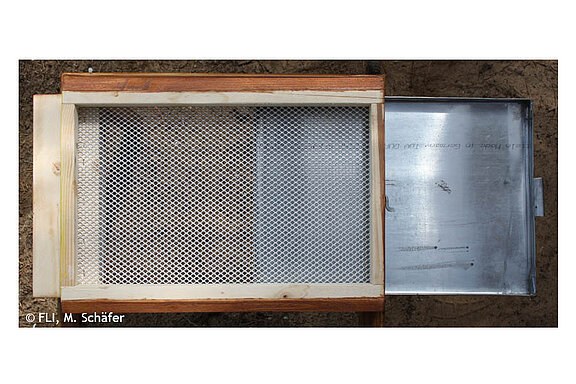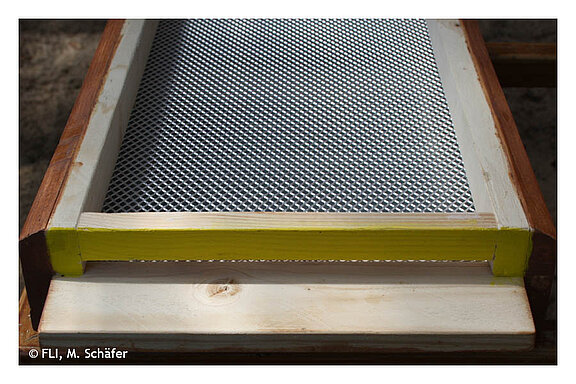Hive beetle traps
Different traps can be installed on the bottom board of the bee hive. If the hive has a screened bottom, traps can alternatively be attached to the side walls of the hive. Inside the traps, the beetles are exposed to toxic or adhesive substances.
Beehives with a mesh bottom board (Varroa screen) can be modified so that an oil tray can be placed underneath of the bottom screen which is non-permeable for bees. The mesh size of the Varroa screen must allow passage of the small hive beetle and if possible, the oil tray should be slightly wider than the interior of the beehive, so that also beetles which try to escape from the bees through the screen directly at the side walls of the hive will drown in the oil.
Traps which can be inserted between the frame top-bars are very simple to use. They are simply filled with oil (~5 mm filling level is normally sufficient) and are available in many variants.
For diagnosis, 4 mm corrugated plastic strips can be used (also see FLI supplemental information Schäfer-Diagnose-Streifen, /Schäfer diagnostic strips, Weblink OpenAgrar, in German language only), which however neither kill nor capture the beetles.
Bottom board traps
The two examples of bottom board traps are Australian products: Apis Beetle TrapTM with sticky foil and ApithorTM, which contains a fipronil-treated piece of cardboard (corrugated cardboard). The side inlets do not allow passage of bees. ApithorTM is not authorised in any EU Member State and no Maximum Residue Limit (MRL) of fipronil is established. Both traps have the shape and size of CD covers, which are often used by beekeepers for construction of DIY traps.
Traps
The shown examples of traps that are inserted between the frame top-bars are Better Beetle BlasterTM from the USA, Aethina StopTM from Italy, and AJ’s Beetle EaterTM from Australia. Frame top-bar traps including are usually filled with oil, in which Aethina tumida will drown; alternatively diatomaceous earth or slaked lime can be used.
Bottom board with Varroa-Gitter
The shown bottom board with Varroa screen is a model of a trap whose design can be varied to fit different hive types. The bottom is designed in such a way that the oil tray is wider than the inner edge of the hive wall. This ensures that also beetles which try to “escape” down the sidewalls through the screen will end up in the oil tray.


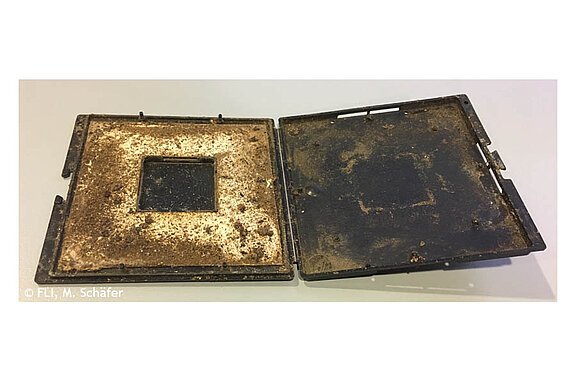
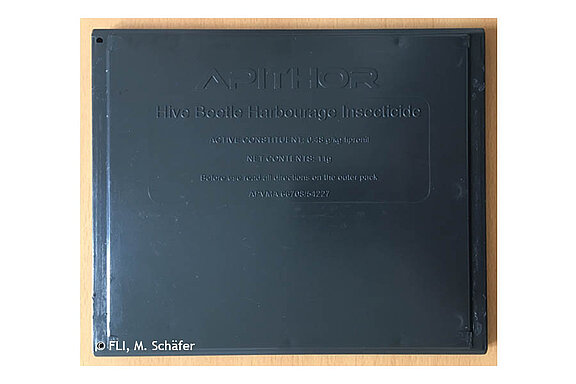
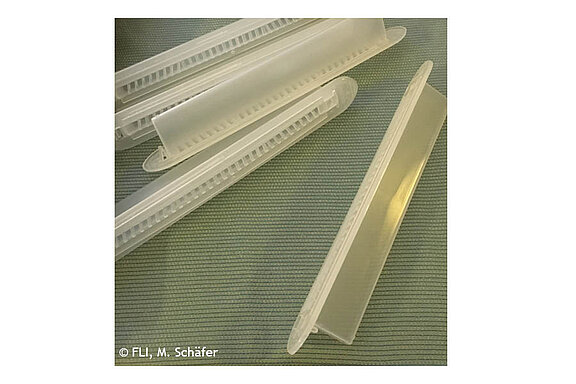
![[''] AJ's Beetle Eater zwischen Wabenoberträger AJs-Beetle-Eater-zwischen-Wabenobertraeger_web.jpg](/fileadmin/_processed_/e/a/csm_AJs-Beetle-Eater-zwischen-Wabenobertraeger_web_db72135e2f.jpg)
